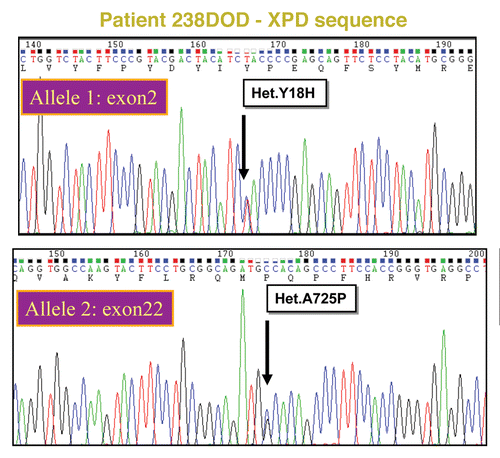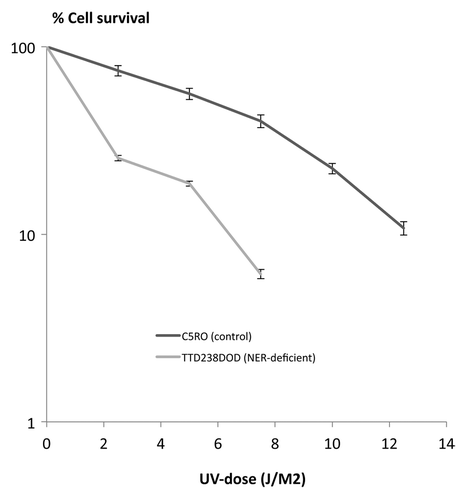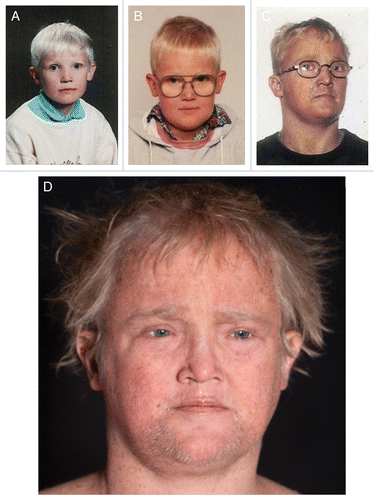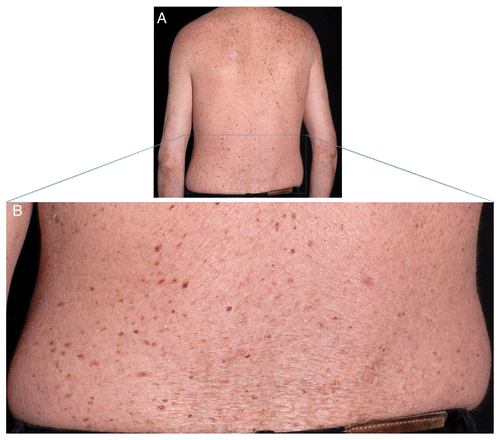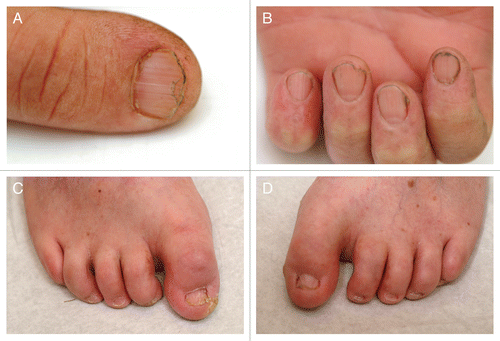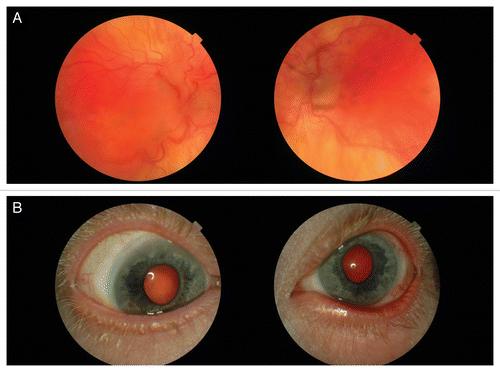Figures & data
Figure 1. Cell cultures and results. Patient's cells were mixed 1:1 with normal control fibroblasts preloaded with cytoplasmic beads. The mixed cultures were assayed for unscheduled DNA synthesis (A) and recovery from transcription inhibition (B). Red fluorescence shows the NER activity, and blue color reflects the DAPI signal. White arrows indicate the 238DOD cells, as recognized by not containing cytoplasmic beads. (C) Mixed cultures as described for panels A/B,immunostained for TFIIH core component XPB (green fluorescence). (D) Measured NER-activity in TTD238DOD and a control cell line. (E) Measured XPB expression in TTD238DOD and a control cell line
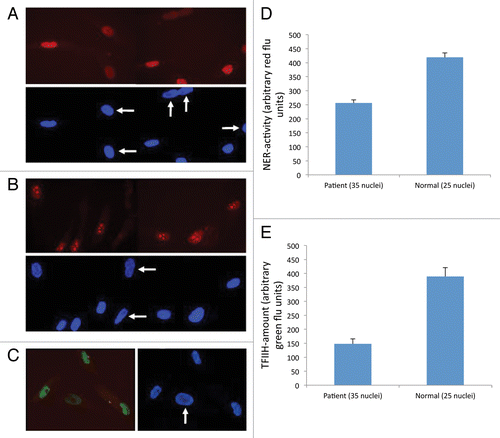
Figure 3. ERCC2/XPD sequence analysis of TTD238DOD Relevant parts of peak plots from standard capillary sequencing analysis of TTD238DOD fibroblast DNA. The patient is a compound heterozygote for two mutations. Top: XPD exon 2, bottom XPD exon 22.
